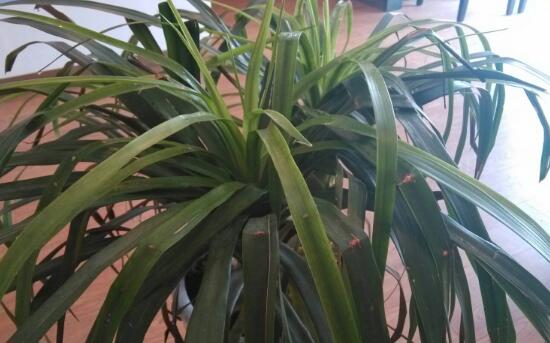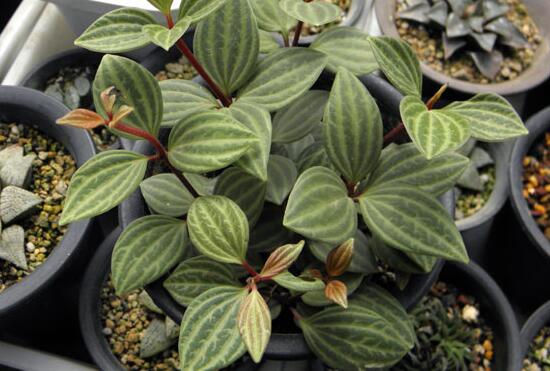What if the leaves of asparagus turn yellow, replenish the light / warm up in winter / reasonable water and fertilizer
Asparagus, a beautiful foliage plant, has beautiful shape, leaves such as weeping willow, pure color, and is very ornamental at home. For veterans, asparagus is a kind of green plant that is easy to raise, but for beginners, the leaves of asparagus always turn yellow, so what about the yellowing of leaves? Today, the editor is here to solve this problem for everyone.
First, what if the leaves of asparagus turn yellow?

To say that the leaves of asparagus turn yellow, in addition to environmental discomfort, it is caused by improper maintenance: if the light is too little, supplement the light; when the temperature is too low, increase the temperature; if the water and fertilizer is not appropriate, water and fertilize reasonably after changing the basin soil; if it is caused by soil partial alkali, you can change the basin soil; if it is caused by diseases and insect pests, we need to spray to prevent and control it.
Second, the causes and solutions of the yellowing of the leaves of asparagus.
1. Environmental mutation
There are many reasons for the yellowing of asparagus leaves, and the first thing we should consider is the environment. Because many of the flower friends' asparagus potted plants are bought online, it is easy to cause a large geographical cross-service, the environment changes too much, and the orchid can not adapt to the leaf yellow for a while.
Solution: it is very simple, if the newly bought asparagus appears leaf yellow, according to its growth habits, we provide it with the most suitable growth environment, after a period of time, the plant will return to health.
2. Too little light
Asparagus is more shady, suitable for growing in an environment with sufficient astigmatism, once the lack of light, it will affect plant growth, resulting in the symptoms of yellowing leaves. Not only that, without abundant sunshine for a long time, asparagus will grow in vain, and the leaf color will be lighter and lighter.
Solution: very simple, supplement the light, but to avoid direct sunlight, especially in summer, be sure to shade, so as not to burn the leaves. If the overgrowth is more serious, proper pruning can be carried out to concentrate nutrients.
3. The temperature is too low
Asparagus likes the warm environment, the most suitable growth temperature is more than 20 ℃, it is not cold-resistant, in winter, when the temperature drops to 6 ℃, if there is no warm measures, the leaves will turn yellow.
Solution: in late autumn and early winter, move asparagus to indoor maintenance and control the room temperature at more than 10 ℃, so that it can survive the winter safely and the leaves will return to health.
4. Improper watering
① insufficient watering: asparagus likes the humid environment, if watering too little, the leaves will naturally turn yellow if they do not get the supply of nutrients. Solution: replenish water in time, but don't water too much at once, just keep the basin soil slightly wet.
② overwatering: although asparagus likes water, it is afraid of stagnant water. once it is overwatered, causing stagnant water in the basin soil, it will be difficult for the roots to breathe, and the leaves will turn yellow because they cannot absorb nutrients. Solution: loosen the soil and let the water evaporate quickly; if the roots have been soaked, the plant needs to be removed from the pot, then cut off the rotten roots and replanted with hearty soil.
5. Improper fertilization
In the growing period of asparagus, it grows luxuriant branches and leaves, at this time, if the fertilization is insufficient, it is easy to appear the phenomenon of yellowing leaves; in addition, if the fertilization is too much or too thick, it may also lead to the phenomenon of scorched yellow shedding at the tip of the leaves.
Solution: when fertilizing too little, good fertilizer can be used, but if you fertilize asparagus, you must apply thin fertilizer frequently to avoid thick fertilizer and raw fertilizer; if you apply too much fertilizer, stop fertilizing immediately and irrigate to dilute the fertilizer. If the roots are burnt out, you need to take off the pot and cut the roots, and then change the pot soil to plant again.
6. Untimely pruning
Under the condition of proper water and fertilizer and sufficient astigmatism, the president of astigmatism is very luxuriant. If there is no pruning at this time, the leaves inside the asparagus will not get light, and in the long run, it will easily cause the leaves to turn yellow and fall off.
Solution: when asparagus grows very dense, it must be pruned timely, so that the surrounding of the plant can be ventilated and transparent, which is best for the growth of the plant.
7. Soil alkalinity
According to the growth habits of asparagus, we know that it likes slightly acidic soil, if the soil is alkaline, or long-term watering of mineral water leads to alkaline soil, the plant will grow poorly, resulting in leaf yellow symptoms.
Solution: very simple, if the soil is caused by alkali, you can replace the basin soil. Remove the plant from the pot, then replace it with 3 parts of fern root, 1 part of moss, 1 part of peat and 1 part of sand, then replant it.
Generally speaking, the breeding method of asparagus is not difficult, but because many flower friends are novices, it is inevitable that there will be symptoms of leaf yellow. However, after reading the full text, I believe you have a clear mind, the leaf yellow problem can be solved in accordance with the above method. With regard to the yellowing of the leaves of asparagus, the editor has introduced it here, hoping to give you some help.
What if the leaves of asparagus are dry? cut leaves are inserted into medium / tap water and used after drying.
For Longxu orchid, the flower friends who have seen it should be impressed. Its leaves are like the dragon's beard, and the leaves are pure and evergreen, so they are deeply loved by them. Raise the dragon Xulan at home, with excellent ornamental, but when its leaves dry, will destroy all the beautiful! So, what about the dry leaves of asparagus orchid? Today, the editor is here to solve this problem for everyone.
First, what if the leaves of asparagus are dry?
As a kind of green plant, the breeding method of asparagus is not difficult, but there are many novice, they have a problem in watering! Asparagus likes slightly acidic soil, but many flower friends like to water tap water, for a long time, the soil will be alkaline, the result is that the leaves are dry! At this time, everyone should cut the dead leaves, cut the roots, and then insert the rest into the water.
Second, the reason why the leaves of asparagus are dry.
For veterans, asparagus is a good green plant, but for beginners, it is easy to dry up the leaves of asparagus. In this regard, flower friends do not worry, because the reason for the dry leaves of asparagus is not complicated, we just often use tap water to water it!
Analysis of dry leaves of asparagus orchid
Tap water is drunk by people, which is rich in minerals. If you water asparagus with untreated tap water for a long time, the basin soil will accumulate too much salt and minerals, which will turn the plant growth soil into saline-alkali soil, and the leaves will easily dry up.
Control methods of leaf drying of asparagus orchid
If you want to avoid the dry leaves of asparagus, you can either water them without tap water; if you want to use them, you'd better water them with tap water for 2-3 days, or wash the plants regularly after watering them with tap water. After doing so, the withered leaves will not appear.
Third, the solution to the dryness of asparagus leaves.
1. Hopeless situation
When it is found that all the leaves of asparagus are dry, or most of them are dry, if you want to save them, you should also observe the root rot of the plant. If at this time the soil of the flowerpot has been cracked, the editor suggests that we do not need to save, thinking that you no longer have the need for breeding.
2. Treatment methods
The leaves of asparagus have dried up, but the root rot is not very serious, so there is still hope of salvation. Method: cut off all the dry leaves, then remove the basin, and remove the rotten roots of asparagus. After cleaning, observe the cross section, if there is still the phenomenon of blackening and yellowing, continue to cut upward until there is none at all. Then insert the remaining asparagus into pure water until it takes root and is potted.
How to do if the leaves of asparagus are dry? Five moves are done!
The reason why the leaves of asparagus are dry.
The main reason for the drying up of asparagus leaves: water quality problems
Generally speaking, we will use the tap water we drink in our daily life to water the plants, but if the tap water is poured for too long, it will lead to the accumulation of too much salt and minerals in the flowerpot, which will turn the growing soil of the plant into saline-alkali soil, and the leaves will easily dry up.
The solution to dryness
1. If conditions permit, it is recommended to use pure water to water plants. If you continue to water the plants with tap water, clean the flowerpots at a fixed point in time.
2, in each watering should be moderate, not too much, too much watering can easily lead to plant disease or rotten roots.
3. When the weather is too dry, you can use a spray can to spray water on the plants, which can alleviate the dryness of the air.
4. in winter, it is necessary to ensure that the temperature in the environment where the plants are located is higher than 5 degrees.
5. If most of the leaves are dry and want to be saved, it depends on the rot of the roots. If the soil on the surface of the flowerpot is already cracked, it is no longer recommended for rescue, and there is no need for breeding. But you can try the following method, may also be able to save successfully, cut off all the dry branches and leaves above, remove the rot below, observe in the section, if there is still the phenomenon of blackening and yellowing, continue to cut upward, until the blackening and yellowing phenomenon is not at all, insert the rest into the pure water, until it takes root in the pot.
- Prev

What to do with the loss of leaves, replenish light / irrigation and dilute fertilizer / spray with diseases and insect pests
Fulutong, an evergreen foliage plant, has belly-like leaves that people like to see. In life, many flower friends raise Fulutong to see its leaves, so when these beautiful leaves turn yellow and ugly, flower friends must be in a hurry! So, what about the foliage of Fulutong?
- Next

What if the leaves of Capsicum bungeanum turn yellow? environmental ventilation / supplementary light / reasonable water and fertilizer
White pepper grass, also known as diamond emerald, is a recently introduced foliage plant, its small and exquisite plant type, white and green leaves, people like from the bottom of their hearts. But in indoor breeding, many novices will yellow the leaves of Capsicum bungeanum, thus affecting the ornamental nature of the plant. that
Related
- Fuxing push coffee new agricultural production and marketing class: lack of small-scale processing plants
- Jujube rice field leisure farm deep ploughing Yilan for five years to create a space for organic food and play
- Nongyu Farm-A trial of organic papaya for brave women with advanced technology
- Four points for attention in the prevention and control of diseases and insect pests of edible fungi
- How to add nutrient solution to Edible Fungi
- Is there any good way to control edible fungus mites?
- Open Inoculation Technology of Edible Fungi
- Is there any clever way to use fertilizer for edible fungus in winter?
- What agents are used to kill the pathogens of edible fungi in the mushroom shed?
- Rapid drying of Edible Fungi

